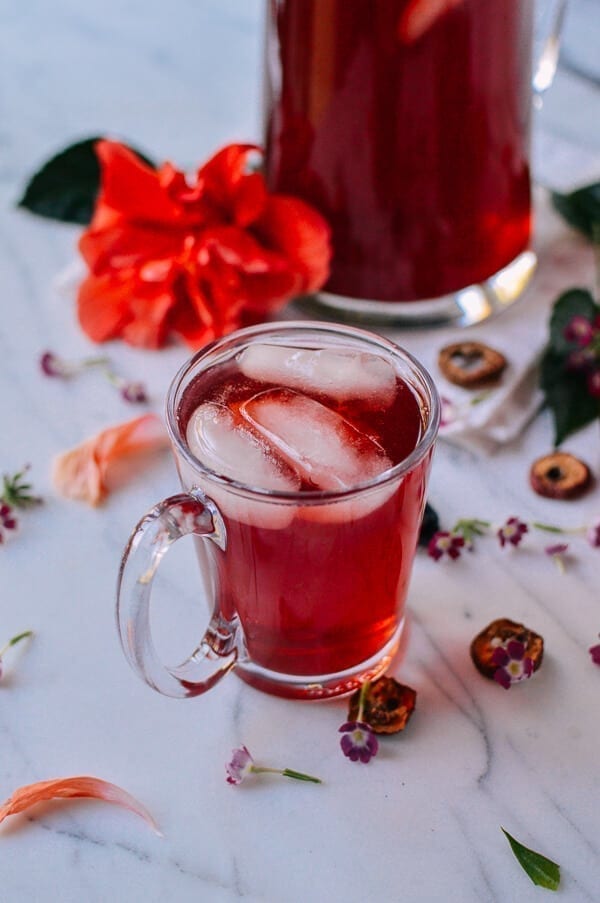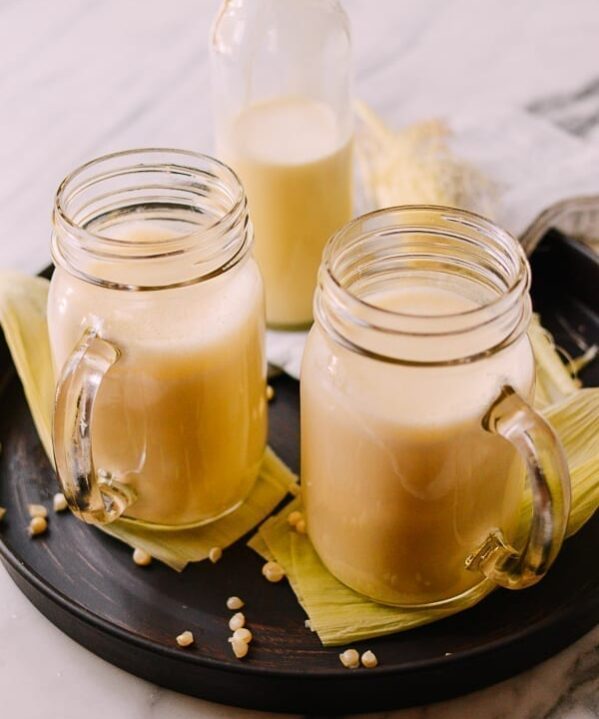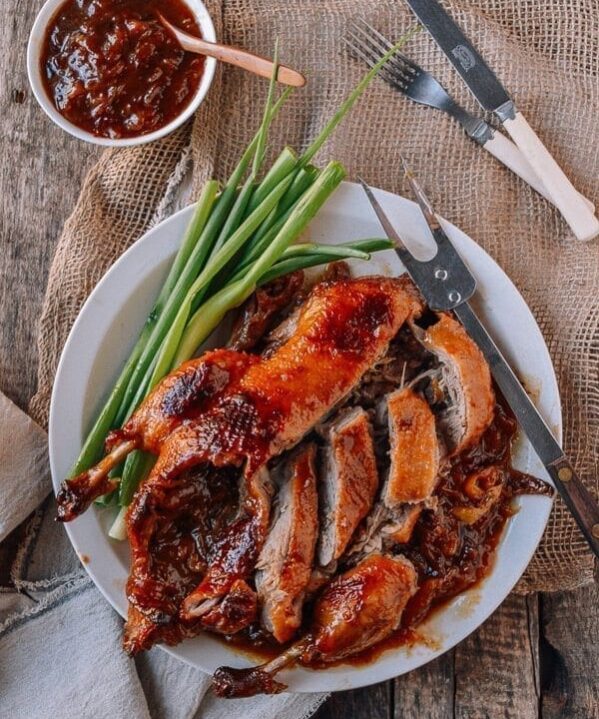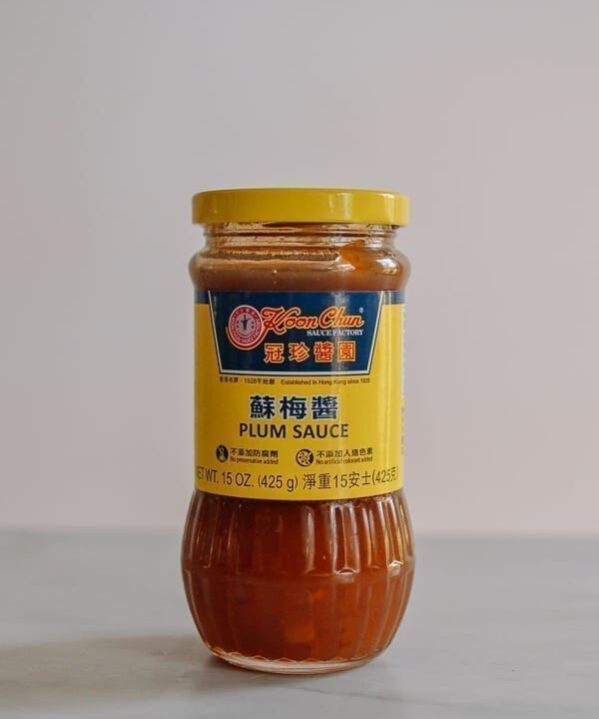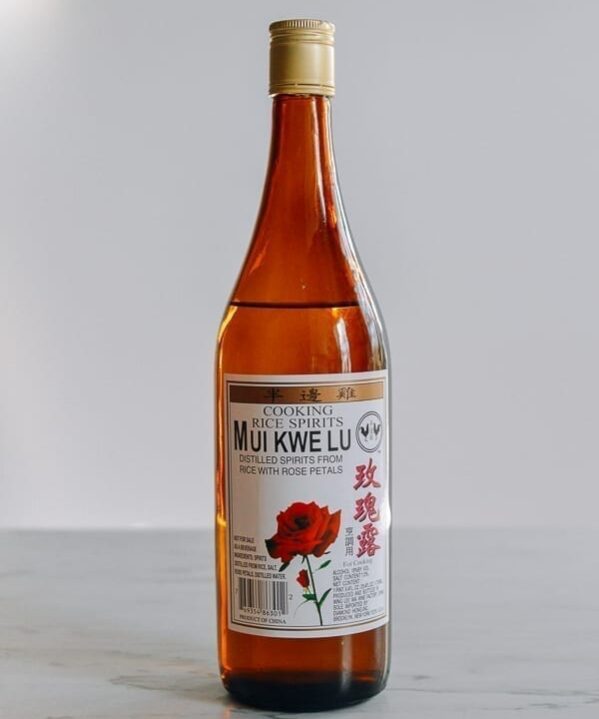So we know that Sour Plum Drink doesn’t exactly sound very good, but it happens to be the commonly used translation of a popular Chinese drink known as suan mei tang (酸梅汤) in Chinese. (While an awkward Chinese translation never gets old, we prefer to call this drink Sour Plum Tea!)
What Is This Sour Plum Drink?
So what is Sour Plum Tea? Before any commercial beverage companies made their way into China, this centuries old drink was, and still is in most Chinese people’s minds, the ultimate thirst quencher, especially in the heat of the summer! The color is a deep magenta and, despite the name, is deliciously refreshing!
When I was young, air-conditioning was non-existent. When your palm-leaf fan stopped being effective is when you knew it was time to cool down internally. I remember the three common remedies were watermelon, mung bean soup (绿豆汤), and this sour plum drink.
I can’t say I had this sour plum drink that many times, but I do remember that a bottle of it was very precious, and we would dilute it with water or ice water so we could share it among more people. I had the fondest memories of this sweet, tart, and refreshing sour plum drink, even with the added water.
Unfortunately, this post also brought back the not-so-fond memories of waiting in long lines under the scorching sun for some iced water. Back in those days, our lives were much harder! No refrigerators in the house.
So what makes up this fruity and refreshing Sour Plum Drink? I have seen recipes that call for any combination of the following dried ingredients: sour plums (乌梅), hawthorn berries (山楂片), dried orange peel (陈皮), licorice root (甘草), dried hibiscus flowers (洛神花), and rock sugar (冰糖).
But dried sour plums and hawthorn berries are the two key ingredients. Don’t try to substitute or eliminate them in this recipe!
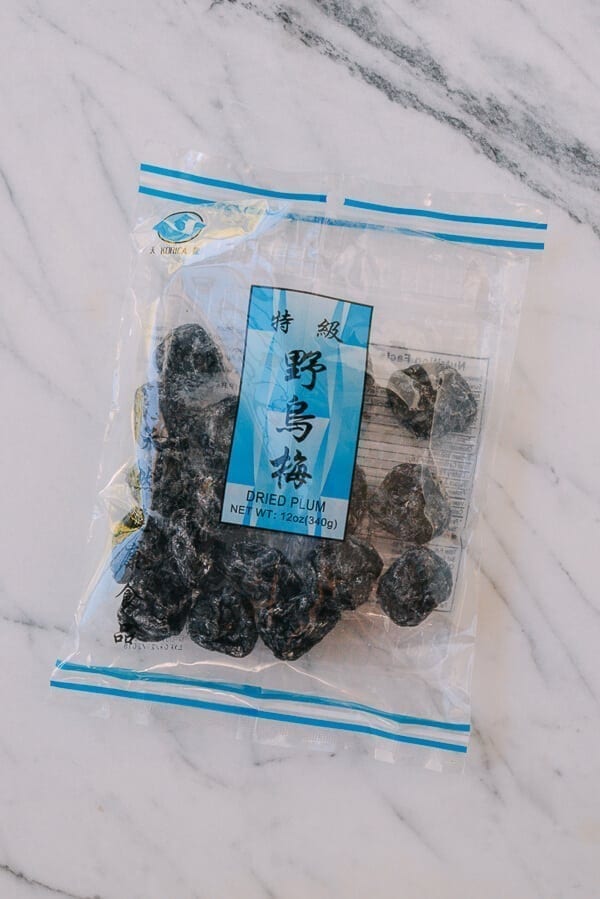
Beyond those 2 ingredients, though, feel free to mix and match based on your own tastes. If you stay in the range listed in the recipe, you really can’t go wrong.
If it is too strong, you can always dilute it with ice and water. Traditional sour plum drink also calls for osmanthus, a sweet fragrant flower that comes in the form of dried flowers, syrup, and wine. It’s most often used in drinks, sweets, and braised meat dishes.
Bonus Medicinal Properties?
Suan Mei Tang is considered by some to be a medicinal drink, kind of like today’s fresh pressed juices. All of the ingredients are natural and meant to cleanse and calm your insides, expel heat and quench thirst.
It’s good for the whole family, and is thought to be effective in fighting “heat-related” ailments according to traditional Chinese medicine. Even young people know to order Sour Plum Drinks when eating hot pot and spicy foods.
But the traditional recipe can be overpowering and even have a bit of a medicinal taste if you’re not careful, so I adjusted the recipe to be a bit more “user friendly.”
But seriously, isn’t the color of this tea so pretty and refreshing? I know you will enjoy it!
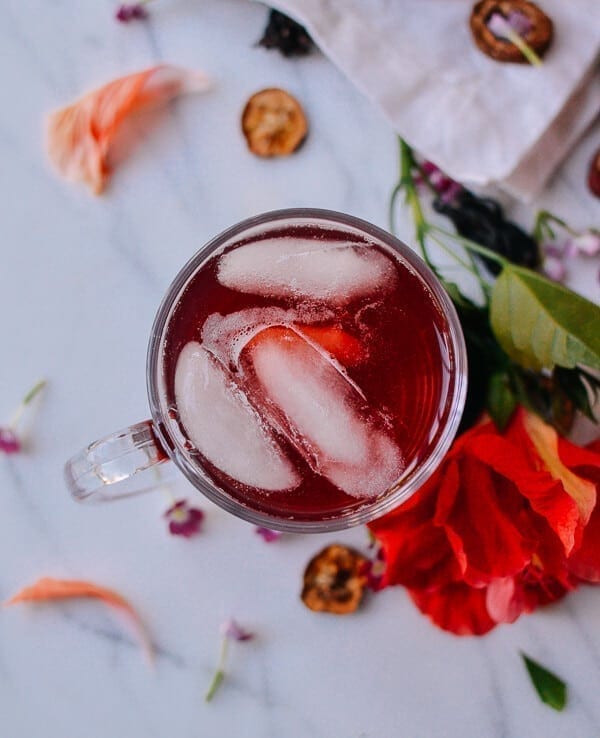
Suan Mei Tang Recipe Instructions
Rinse all the dried ingredients under running water to get rid of any dirt or debris. In a large pot, combine the water and the dried ingredients (if you like, you can wrap all the dried ingredients in a cheesecloth to avoid the straining step later), and soak for 1 hour.
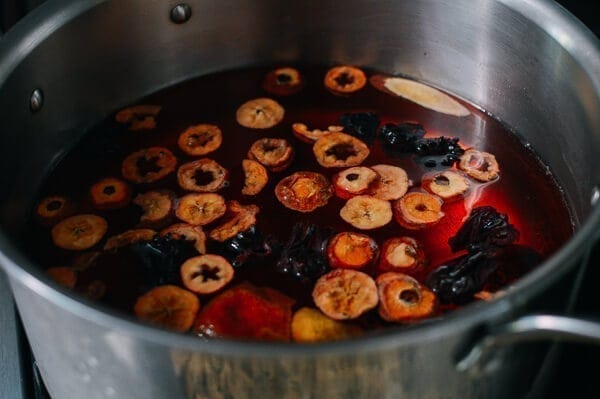
After soaking, bring everything to a boil, and immediately turn the heat down to low. Simmer (with the lid on) for 45 minutes. Add the rock sugar, let it dissolve completely, and turn off the heat to let the liquid cool.
Once cooled, strain the liquid into a large container, and serve over ice.
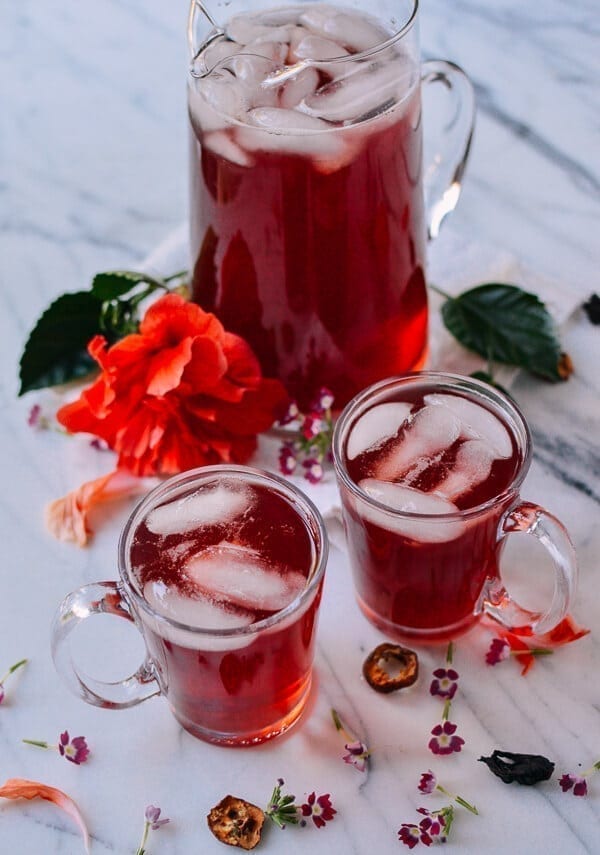
Remember to store the leftovers in the refrigerator; it will last for 3-4 days. You’ll know that the drink has gone bad if there are air bubbles floating on top and the liquid is opaque instead of clear!
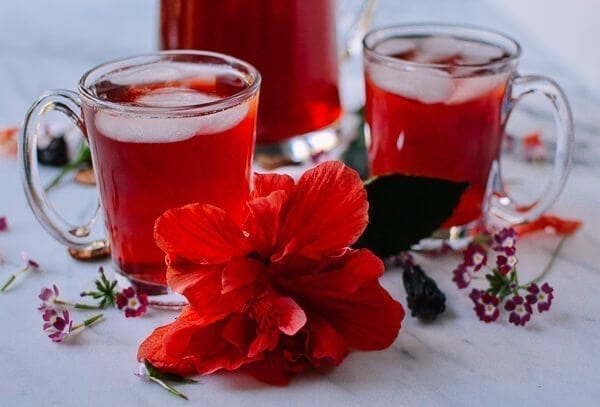
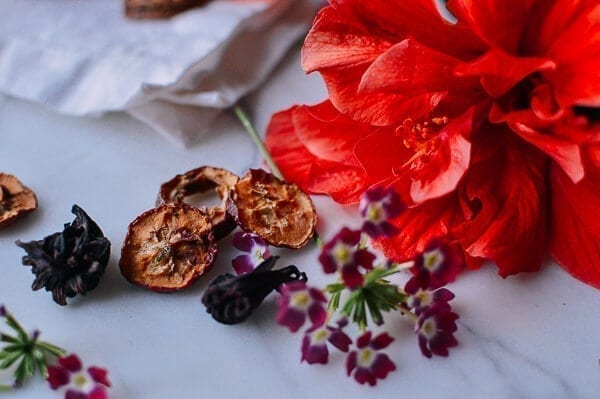
Sour Plum Drink (Suan Mei Tang – 酸梅汤)
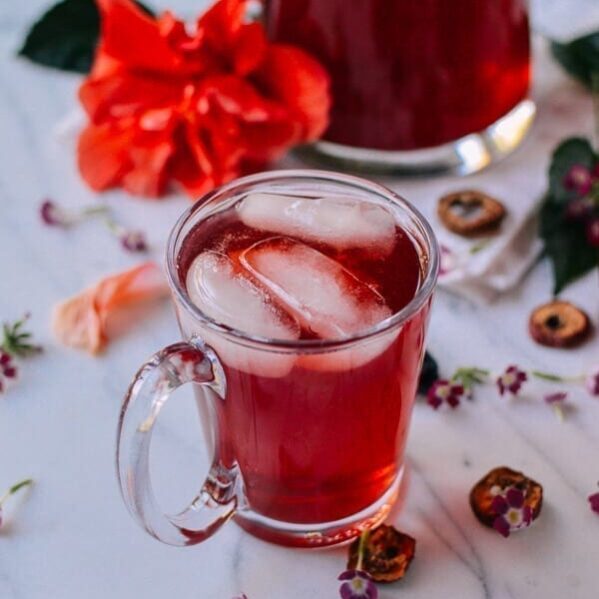
Ingredients
- 2.5 L water (about 10 cups)
- 50-100 grams dried hawthorn (山楂片)
- 30-100 grams dried sour plum (乌梅)
- 3-10 grams dried orange peel (陈皮)
- 3-10 grams dried licorice root (干草)
- 10-20 grams dried hibiscus flower/tea (洛神花)
- 1-3 grams dried osmanthus flower (optional)
- 100 grams rock sugar (or to taste)
Instructions
- Rinse all the dried ingredients under running water to get rid of any dirt or debris. In a large pot, combine the water and the dried ingredients (if you like, you can wrap all the dried ingredients in a cheesecloth to avoid the straining step later), and soak for 1 hour.
- After soaking, bring everything to a boil, and immediately turn the heat down to low. Simmer (with the lid on) for 45 minutes. Add the rock sugar, let it dissolve completely, and turn off the heat to let the liquid cool.
- Once cooled, strain the liquid into a large container, and serve over ice. Remember to store the leftovers in the refrigerator; it will last for 3-4 days. You’ll know that the drink has gone bad if there are air bubbles floating on top and the liquid is opaque instead of clear!
